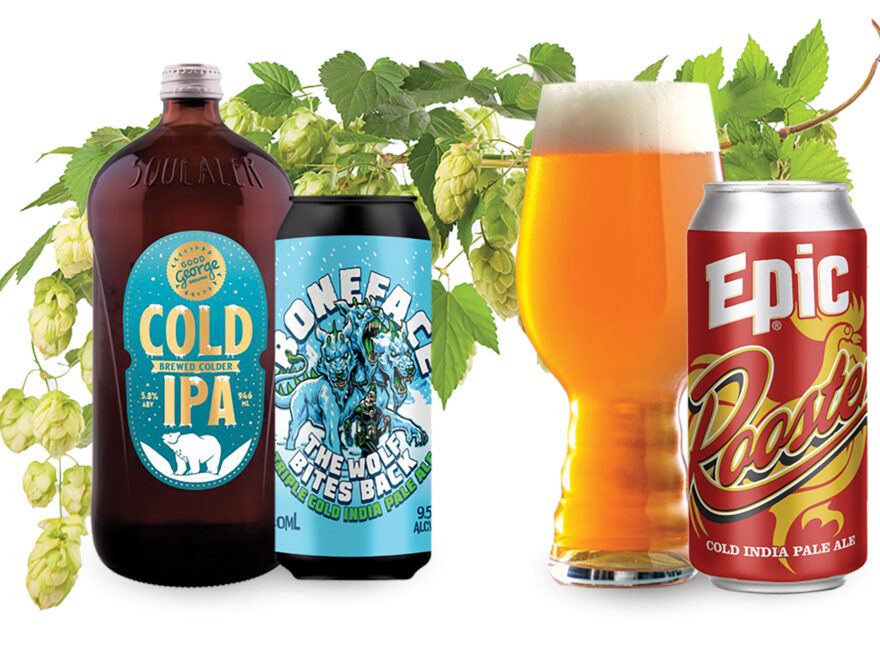The words “cold” and “beer” go together perfectly.
Michael Donaldson – hoppiness.co.nz
So, it’s little wonder that “Cold IPA” is a term you will be seeing more often this year.
It’s a great marketing term because who isn’t drawn to the idea of a nice cold IPA?
But in this case, it also means something else — a convergence of lager and India Pale Ale, and a beer style that takes all the old ideas of “ale” and “lager” and turns them upside down.
“Cold IPA” was a marketing term created by a brewer in America when he brewed a hybrid beer that was brewed like a lager, with light, crisp, refreshing body but with a big, juicy hop flavour to boot. The technical aspects are complicated but the end result is delicious. Of course, the concept of an “ale” brewed like a “lager” has caused some consternation among beer geeks who historically separated the two in a black-and-white fashion.
But craft beer has tossed out all the rules and as one Kiwi brewer said to me: “I drink what’s in the glass in front of me and as long as it tastes nice, I don’t care how they made it.”
The beauty of Cold IPA is the lighter-style malt structure coupled with the super-dry finish and the bright hoppiness. For people who think some IPAs are too heavy, or “chewy”, it’s a nice change of direction and makes these beers really drinkable, especially on a hot day.
There are some great examples already on the market, including Good George Cold IPA, Epic Rooster, Boneface The Wolf Bites Back.
And since we’re talking about “cold” beer it’s worth mentioning temperature. In general, the colder your beer is, the less aroma and flavour you will get. Lagers are great when served ice cold as their neutral flavour doesn’t lose any impact when served straight out of a cold fridge. But a hoppy-style beer such as a Cold IPA gets some benefit from being a little warmer as that helps the hop aromatics rise out of the glass.
The ABV is a good starting point for matching temperature. If it’s 6 per cent ABV, then serving at 6C is a good bet. And a 10 per cent beer is better at 10C. But no one carries around a thermometer to measure their beer’s temperature right? So how do you figure it out?
Most beers straight out of the fridge are between 3C-5C. The bottom and back of the fridge are the coldest places, so store your lagers there and drink them as they come out. For IPAs, if they’re out of the fridge for an hour before drinking that won’t hurt. And in winter, stouts and porters will be happy at temperatures as high as 10-12C … room temperature in some homes!

